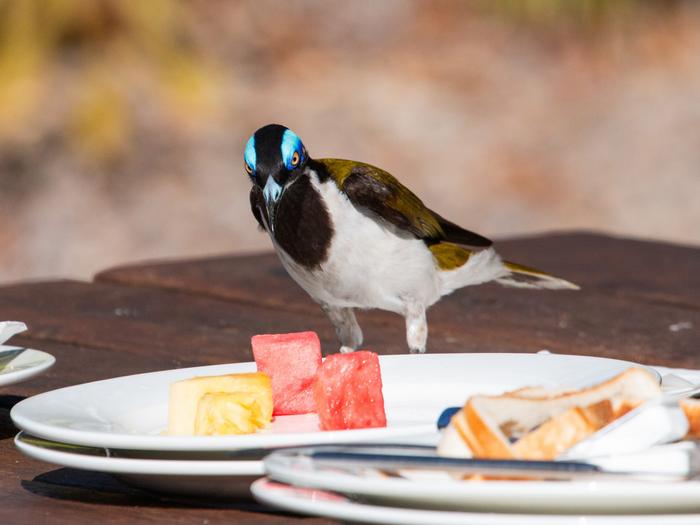Urbanization is a phenomenon that has become increasingly prevalent in contemporary times, leading to significant changes in various ecosystems worldwide. One of the major consequences of this urban sprawl is the impact it has on biodiversity. Among the most affected groups are birds, whose populations and behaviors are being altered in response to the pressures imposed by urban environments. A recent study conducted by researchers at the Max Planck Institute for Biological Intelligence and the University of Granada delves into the intriguing correlation between urbanization and the plumage coloration of birds, shedding light on how these changes might influence avian success in urban landscapes.
The study focuses on a global dataset comprising data from over 1200 bird species. The researchers sought to understand the nuances of how urban environments affect bird populations, particularly in terms of their plumage colors. The findings reveal a fascinating trend: bird species that flourish in urban settings tend to possess less brown coloration compared to their rural counterparts. This is significant because stark differences in coloration can influence visibility, camouflage, and even mate selection in birds—a nuanced interplay that highlights how species adapt to their ever-changing habitats.
In urban areas, the predominant colors are often shades of grey, featuring materials like concrete and asphalt that create a distinctive backdrop against which birds must navigate. The researchers suggest that this shift in the environment may offer a competitive advantage to more colorful bird species. In essence, being vibrantly colored in an urban landscape may reduce the likelihood of predation, as these birds can either blend in with artificial structures or stand out more in a landscape that lacks the natural earth tones of their rural habitats.
The implications of the research extend into discussions surrounding thermal regulation. Warmer urban environments can alter the heat balance for birds, and more colorful plumage might play a role in thermoregulation. For example, brighter plumage can reflect sunlight better, potentially allowing for effective temperature management in hotter urban climates. This adaptability might further explain the increasing prevalence of colorful birds in cities—survival through innovation and adaptation.
Interestingly, the study also challenges previous assumptions about urban bird communities. While earlier research indicated a decrease in color diversity among urban birds, the current findings show a diverse array of colors in urban habitats, albeit with a reduced number of species overall. The research highlights that while urban areas may host fewer species compared to rural regions, the remaining bird communities can possess a greater diversity of colors, thereby enriching the urban biodiversity landscape.
Another key aspect of the research was its emphasis on sex differences in plumage coloration. Urban environments appear to favor not only vibrant plumage but especially for female birds, leading to a greater elaboration in coloration. This trend may be linked to the reduced presence of natural predators in urban areas, thereby allowing birds to display more conspicuous traits without the usual risks associated with visibility in more natural, predator-rich environments.
Furthermore, the study provides crucial points for conservation and urban planning. As towns and cities continue to expand, understanding the relationship between urbanization and wildlife is vital for developing strategies to create habitats conducive to various species’ survival. Urban ecologists must consider how the artificial environments created by human activity can be made more welcoming to wildlife, incorporating green spaces, plant diversity, and structures that mimic natural habitats.
The researchers’ analysis sheds light on how familiarity with urban structures can lead to a reassessment of avian coloration. As species adapt, there is a potential for an ongoing evolution shaped by these urban habitat pressures. Future research is encouraged to explore whether similar trends can be observed in other classes of animals, such as mammals and reptiles. Moreover, interdisciplinary studies may yield broader insights into urban ecology, biodiversity, and the evolution of species in response to changing environments.
This emerging evidence regarding the correlation between successful urban birds and their plumage coloration enriches the discourse on urban ecology and the challenges faced by wildlife in rapidly changing habitats. As scientists continue to study these dynamics, the findings reinforce the idea that urbanization is reshaping not only the physical landscapes but also the very biology of the species that inhabit them. Additionally, with more data from varied locations and species, there exists an opportunity for integrating this knowledge into actionable policies aimed at protecting urban biodiversity.
Looking forward, this groundbreaking research serves as a stepping stone toward understanding the intricate relationship between urban environments and wildlife adaptation. It highlights the adaptability of various species while simultaneously raising questions about the broader impacts of urbanization on biodiversity. The findings may very well catalyze a re-evaluation of conservation strategies that could lead to enhanced urban environments where both human populations and wildlife can coexist harmoniously.
Subject of Research: Animals
Article Title: Colourful Urban Birds: Bird Species Successful in Urban Environments Have More Elaborate Colours and Less Brown
News Publication Date: 4-Apr-2025
Web References: DOI
References: Not specified
Image Credits: MPI for Biological Intelligence/Kaspar Delhey
Keywords: Urbanization, Biodiversity, Plumage Colouration, Avian Ecology, Adaptation, Species Survival, Urban Environments, Bird Behaviour.




